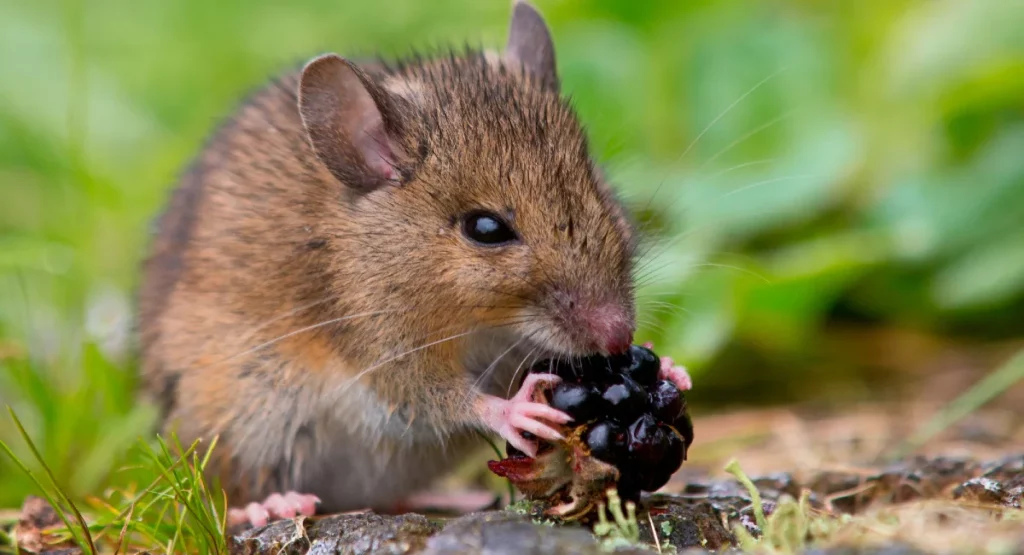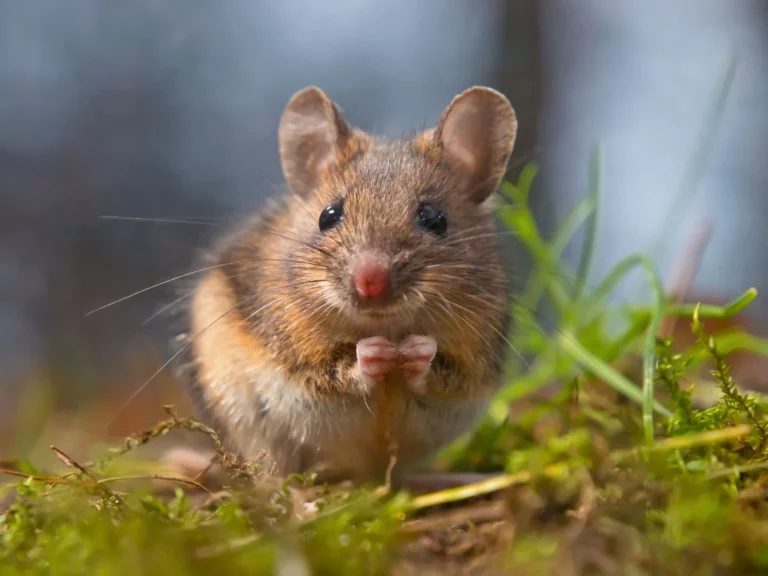As I stood amidst the lush, vibrant foliage of my beloved greenhouse, I couldn’t help but feel a deep sense of satisfaction. The greenhouse had become my sanctuary, a place where I could escape the chaos of the outside world and immerse myself in the soothing embrace of nature. But this sanctuary was under threat, and the culprits were cunning, relentless, and furry: RATS
If you’re a gardener like me, you know the frustration of finding rats in your beloved greenhouse. But don’t worry, I’ve been there too, and I’ve figured out how to keep those pesky rodents away.
To avoid rat problems, follow these simple steps:
Seal entry points, keep things clean, store food safely, and stop water access. Use rat-repelling devices, consider natural predators like cats, and use humane traps if needed.
In addition, secure pet food, build a fence and elevate plants. Try ultrasonic deterrents and use poison carefully as a last resort. Use mint’s aroma and plant herbs as a protective barrier.
Let’s explore the world of plants, simple strategies, and practical tips to make sure your greenhouse stays rat-free. It’s time to protect your green haven.
What Attracts Rats In The Greenhouse?

Food Sources:
- Ripe or decaying plants and fruits emit scents that can entice pests. If there is overripe or fallen produce in your greenhouse, it can be a magnet for unwanted visitors.
- Stored bags of seeds, grains, or birdseed can be alluring to these pests.
- Pet food, if stored in or near the greenhouse, can become a target.
Water Sources:
- A greenhouse with a leaking irrigation system or hoses can provide a consistent water source, appealing to pests. Rats are highly dependent on access to water sources for their survival.
Shelter and Nesting Sites:
- Accumulated clutter, old pots, or unused equipment can serve as hiding spots and potential nesting grounds.
- Overgrown vegetation, such as tall weeds or thick ground cover, can create hiding spots for these unwelcome guests.
- Gaps in doors, windows, or vents can serve as entry points for pests.
Warmth and Protection:
- It offers a warm and sheltered environment, particularly during adverse weather conditions, making them an attractive refuge.
Insects and Pests:
- Pests are opportunistic feeders and may be drawn to greenhouses with a surplus of insects or other pests, which can serve as a food source.
Top Ways to Repel Rats In The Greenhouse
Seal Off Entry Points:
- Begin by thoroughly inspecting your greenhouse for any holes, gaps, or openings that rats could use to gain access.
- Use coarse steel wool, wadded up aluminum foil, or specially designed metal mesh for rodent exclusion to block these entry points.
- Pay close attention to any gaps around doors, windows, and vents.
Maintain Cleanliness:
Keep your greenhouse neat and free of piles of equipment, trash, and clutter. Daily visits and activity in the greenhouse can discourage rats from establishing nests. Remove fallen leaves, debris, and any sources of shelter that rats might use for nesting.
Remove Food Sources:
Eliminate potential food sources by storing seeds, animal food, and other edibles in sealed, rat-proof metal containers.Avoid placing pet food or birdseed inside the greenhouse, as these can attract rats.
Plug Water Sources:
While it’s not advisable to remove garden ponds or bird baths, address other water sources such as dripping taps to discourage rats. Also, secure drains and consider adding baffles to drainpipes to prevent easy access to water.
Use Rat-Repelling Methods:
- Install electronic ultrasound devices designed for repelling rats. These devices emit high-frequency sounds that disturb rats and discourage them from settling in your greenhouse. Ensure they have fresh batteries or are wired into the electrical system for uninterrupted operation.
- Soak cotton balls or cosmetic pads in peppermint oil or rat-repelling products with aromatic scents. Distribute these throughout the greenhouse, creating even, heavy coverage, and refresh them as needed.
Employ Natural Predators:
Consider keeping a cat exclusively in the greenhouse, with its litter box and food bowl there. Cats can help deter rats but should not roam extensively outside to prevent them from bringing insects inside.
Use Humane Traps:
If you need to catch rats already present in your greenhouse, consider using humane traps that capture the rodents without harming them. Release them far from your property afterward.
Store Pet Food Securely:
Ensure that pet food and chicken feed are stored securely in airtight containers to prevent attracting rats.
Build a Sturdy Fence:
Erect a fence around your garden or greenhouse and reinforce it to deter rats from entering. Pay special attention to the gate and the area beneath it.
Implement Moats and Elevation:
Place your seedlings on elevated surfaces or within water-filled trays to make it difficult for rats to access them. Use clear plastic lids or covers to protect seed trays from rodent interference.
Try Ultrasonic Deterrents:
Ultrasonic rodent deterrents emit high-pitched sounds that are uncomfortable for rodents. These can be a chemical-free option to discourage rats from entering.
Use Poison :
Consider using rodent poison as a last resort, but exercise caution. Ensure it’s safely placed inside dedicated holders and inaccessible to children or pets. Understand that rodent poison may take time to be effective and should be used ethically.
Mint’s Aromatic Defense:
- Mint, with its aromatic qualities, acts as a natural repellent for rodents. Strategically place pots of mint around the perimeter of your garden and inside the greenhouse.
- For a low-maintenance option, scatter dried mint near the openings of the greenhouse. Alternatively, soak cotton balls in peppermint oil and position them strategically, replacing them every couple of weeks.
Herbal Perimeter:
- Alongside mint, rodents are deterred by the strong herbal scents of basil, echinacea, garlic, and thyme.
- To create a protective border, consider planting these herbs around the exterior of your garden. The wafting scents will signal to rodents that your garden has nothing to offer, leading them to turn away.
Potent Potato Trick:
- Surprisingly effective, instant potatoes can serve as a cost-efficient solution for rodent control. Sprinkle a few tablespoons of potato powder where you suspect a mouse infestation.
- When mice ingest the powder, it expands in their small stomachs, rendering them unable to digest it. This leads to their demise.
- Caution is advised when using this method if you have other pets to ensure they do not consume the potato flakes.
Odorous Onions’ Repellent Effect:
- Rats and mice strongly dislike the pungent aroma of onions. You can use this to your advantage by placing onions at suspected entry points for rodents.
- Replace the onions every few days to prevent rotting. Ensure that onions are kept away from pets, as they can be toxic to dogs.
- Alternatively, consider cultivating onions, leeks, and garlic around the periphery of your garden beds. This not only repels rodents but also deters various other pests.
What Damage Can Rats Cause In The Greenhouse?

Rats can be a real problem in greenhouses. They don’t just spread diseases like Leptospirosis; they can also cause a lot of damage. Recently, in my own greenhouse, rats made a mess by knocking over pots and scattering my cacti. Some of the cacti had distinct bite marks from the rats’ gnawing, which they do to keep their teeth short.
Moreover, A friend had rats in his greenhouse too. They chewed on pipes and wires, which can lead to costly repairs. Rats chew on hard stuff to maintain their teeth. But it’s not just about the damage. They can make you sick by spreading diseases like Hantavirus and Hemorrhagic fever through their droppings and urine.
So, it’s important to take steps to keep rats out of your greenhouse to protect your plants and your health.
Identify rats or mice
Droppings: Rat droppings are like shiny black beans, about 10-20 mm long, with blunt ends. Mice leave smaller, pointy droppings that are only 1-2 mm long.
Gnaw Marks: Rats have bigger teeth, about 5 mm long, so they create larger, more defined bite marks. Mice, with their smaller teeth, make tiny, scratchy bite marks.
Sizes: Rats are heavyweights, weighing in at 150-300 grams and measuring 16-40 cm in length. Mice are the petite ones, tipping the scales at 12-45 grams and measuring 2-10 cm.
Tails: Rats sport thick, bald tails, while mice flaunt long, slender tails covered in fur.
FAQs
How do you keep rats away permanently?
To keep rats away permanently, it’s crucial to seal all entry points, maintain a clean environment, use traps or baits, and consider professional pest control if the problem persists.
What smells hate rats?
Rats dislike the strong scents of peppermint, garlic, and ammonia. These odors can deter them from your surroundings.
How do you keep rats away naturally?
Natural rat deterrents include using essential oils like peppermint, keeping a clean space, and using natural repellents like vinegar and cayenne pepper.
Do rats go in greenhouses?
Yes, rats can enter greenhouses in search of food and shelter. Proper sealing and preventive measures are essential to keep them out.
What scares rats away?
Rats are scared away by loud noises, bright lights, and the presence of predators like cats. Traps and deterrents can also be effective.
How do you make rats go away fast?
To make rats go away quickly, use traps, bait, and remove their food sources. Consider professional pest control for a swift solution.
Can you spray anything to keep rats away?
Yes, you can use rat repellent sprays, but their effectiveness varies. Combine sprays with other preventive measures for better results.
Conclusion
To wrap up, as I worked on my greenhouse, I had quite the rat problem. But I figured out some straightforward tricks to keep them at bay. First, I made sure there were no holes or gaps they could sneak through. I used steel wool and foil to block their entry points, especially around doors and vents.
Then, I kept my greenhouse super clean, with no messy piles or hiding spots for them. I also stored my seeds and pet food in tightly sealed containers to remove any tempting snacks. To cut off their water supply, I fixed any dripping taps and added baffles to drainpipes.
Moreover, I tried some cool rat-repelling gadgets like ultrasound devices, and I even brought in a cat to keep watch. Lastly, I planted mint and onions around my greenhouse – rats hate their smell! These simple steps did the trick, and my greenhouse became a rat-free zone, protecting my beloved plants.

